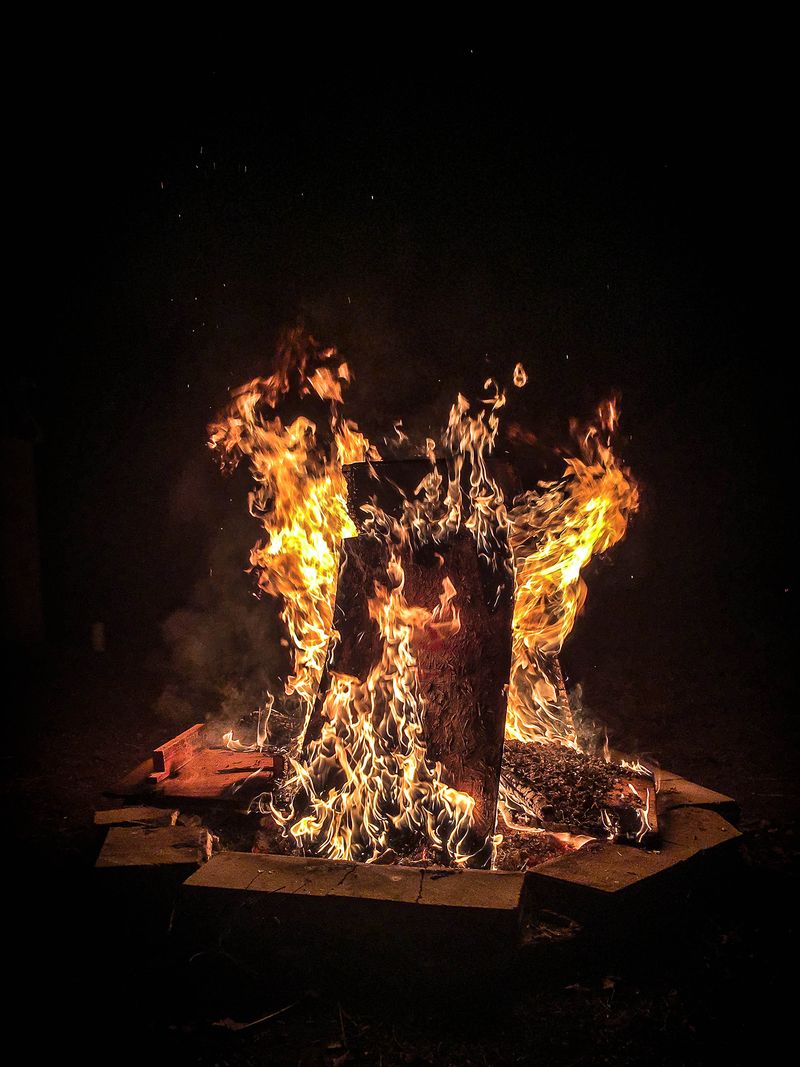- Yellowknife Faces Emergency Evacuation as Wildfire Approaches
- Long Lines of Traffic Create Gridlock as Residents Flee
- Warning from Local Authorities
- Evacuation of Nearby Towns
- A Challenging Battle: Firefighters Struggle to Contain the Blaze
- Chaos and Destruction: Witnesses Describe the Apocalyptic Scenes
- Advice and Coordination in the Midst of Crisis
- The Climate Crisis and the Devastating Impact on Northern Canada
- You might want to read !
Yellowknife Faces Emergency Evacuation as Wildfire Approaches
Long Lines of Traffic Create Gridlock as Residents Flee
Yellowknife, the capital of the Northwest Territories in Canada, is facing an unprecedented emergency as authorities have ordered the entire population of over 20,000 residents to evacuate due to an approaching wildfire. The blaze, which is currently 16km away from the city, is advancing rapidly and could reach Yellowknife by the weekend. As a result, long lines of traffic have clogged the only road out of town, causing gridlock and significant delays for those trying to escape the imminent danger.
Warning from Local Authorities
The Yellowknife mayor, Rebecca Alty, has urged residents to leave their homes and make their way to the city’s airport where evacuation flights will be available. She advised residents to bring necessary supplies such as water and food, as the wait times at the airport could be long. The entire population is expected to be evacuated safely from the city. The out-of-control wildfire, which has already scorched an area of 163,000 hectares, is part of Canada’s worst wildfire season, with over 1,000 active fires burning across the country.
Evacuation of Nearby Towns
The wildfire near Yellowknife has not only led to the evacuation of the city but also several other nearby towns, including the Dene First Nation communities of N’dilo and Dettah. These communities, like Yellowknife, are at high risk due to the approaching flames. The evacuation efforts are putting a strain on the region’s resources, with limited evacuation centers available and roads passing through areas with active fires.
A Challenging Battle: Firefighters Struggle to Contain the Blaze
According to Mike Westwick, the Northwest Territories fire information officer, firefighters have been battling this particular fire for over a month. Despite their efforts, the fire has proven challenging to contain, finding pathways through established control lines. The fire has burned deep and hot, leading to its rapid spread and the current threat to Yellowknife.
Chaos and Destruction: Witnesses Describe the Apocalyptic Scenes
As thick smoke envelops the region, witnesses recount scenes of chaos and destruction. The main road leading towards Fort Providence is filled with traffic, and people have spent the night sleeping in their cars at a service station. Garth Carman, who managed to evacuate with his 16 cats, described witnessing a wall of flames and trees exploding as they drove through the fire. Other towns, such as Hay River and Enterprise, have also been ravaged by the blaze, with images of burned wildlife and destroyed buildings painting a grim picture of the situation.
Advice and Coordination in the Midst of Crisis
Local authorities are urging residents to drive with caution and care as the city’s highway may experience closures at any time due to the fire’s proximity. They have also encouraged residents to help one another and offer space to friends or pets if possible. Social media platforms like Facebook have become important tools for coordinating evacuations and checking in with neighbors, but due to Canada’s Meta ban on news-sharing, people are unable to share links to news stories with crucial information. Instead, authorities have pointed residents towards CBC Radio or the web for updates.
The Climate Crisis and the Devastating Impact on Northern Canada
This summer has been especially harsh for northern Canada, with record-breaking temperatures and a devastating impact from wildfires. Fort Good Hope, a community located 500 miles north-west of Yellowknife, experienced the hottest day ever recorded in the far north, with temperatures reaching 37.4C (99.3F). These extreme weather events and the growing frequency of wildfires are clear indicators of the ongoing climate crisis and its impact on vulnerable regions like Yellowknife and the Northwest Territories.
Sources:
- Tracey Lindeman, “Yellowknife Wildfire: Traffic Clogs Road Out of Town as Residents Race to Evacuate,” The Guardian, August 17, 2023,
<< photo by Jason Villanueva >>
The image is for illustrative purposes only and does not depict the actual situation.You might want to read !
- Inferno Engulfs Tenerife: The Unstoppable Wildfire Engulfs Northern Parts of the Island
- Inferno on the Canary Islands: Tenerife villages forced to evacuate as wildfires ravage the land
- “The Rise of Lauren Hemp: A Hero’s Welcome in North …”
- Tragedy at Sea: A Deadly Boat Incident Rocks Cape Verde
- Actor Darren Kent’s Passing Leaves a Void in Game of Thrones and EastEnders
- Remembering the Life and Legacy of Alex Collins: A Tragic Loss for the NFL and Beyond





